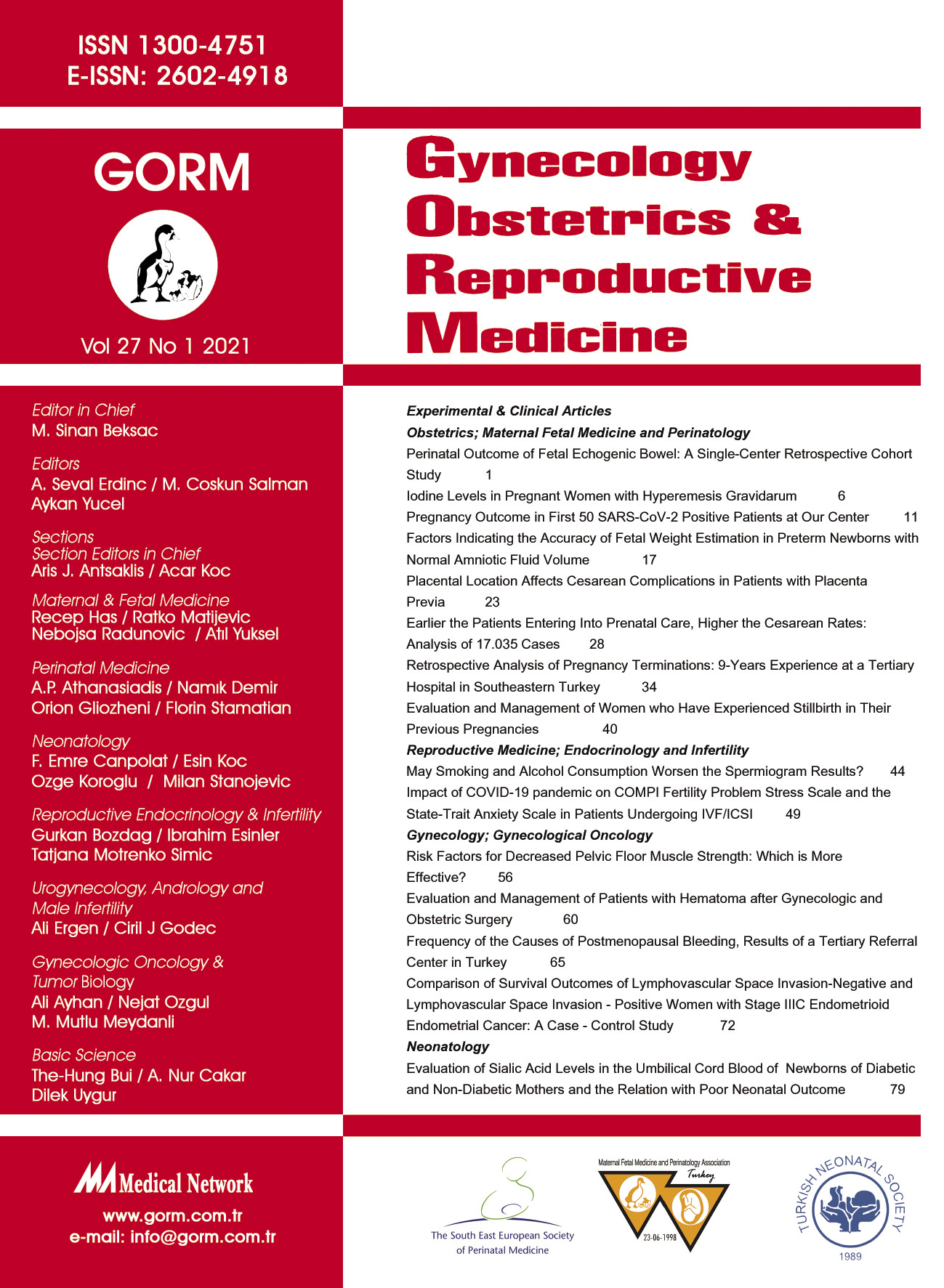Evaluation and Management of Patients with Hematoma After Gynecologic and Obstetric Surgery
DOI:
https://doi.org/10.21613/GORM.2019.961Keywords:
Gynecologic and obstetric surgery, Percutaneous catheter, Postoperative hematoma drainage.Abstract
Objective: Postoperative hematoma following abdominal surgery is relatively rare and mainly depends on the type of surgery. Specific treatment including surgery or interventional radiology is sometimes necessary. The aim of this study is to evaluate the cases of postoperative hematoma after gynecologic and obstetric surgery.
Study Design: This is a retrospective cohort study of 30 patients with hematoma developed after gynecologic and obstetric surgery. We included the patients who hospitalized with the diagnosis of a postoperative hematoma between June 2017 and April 2019 at Gazi Yasargil Training and Research Hospital of Health Sciences University. Hematomas occurring after endoscopic surgery and episiotomy were not included. The diagnosed cases were divided into three groups as wound hematoma, rectus sheath hematoma and intra-abdominal hematoma (intraperitoneal and retroperitoneal). All cases were assessed by patient demographics and clinical findings, hematoma of characteristics, treatment methods and results.
Results: A total of 30 patients were included in the study with a mean age of 33.0±8.6 years. Incidence of hematoma account for 0.2%. The mean c-reactive protein was 37.9±47.4 mg/dL at admission and 14.6±25.8 mg/dL at discharge, respectively. The decrease was statistically significant (p < 0.001). The mean hemoglobin was 10.6±2.1 g/dL at admission and 10.7±1.5 g/dL at discharge. Fever was detected in 7 (23.3%) patients. Only 12 patients (40%) were followed up by observation and symptom management. In 10 (33.3%) patients, antibiotics were included in the treatment due to infection. In addition, 4 patients (13.3%) had relaparotomy, 5 patients (16.7%) underwent percutaneous radiological drainage and 8 (26.7%) received blood transfusion. The mean time of resorption of the hematoma was 4.6 ± 2.0 days. The evaluation of the hematoma locations revealed that 14 patients (46.7%) had wound hematoma, 7 patients (23.3%) had rectus sheath hematoma (Type I: 2 cases, type II: 3 cases, type III: 2 cases), 8 patients (26.7%) had pelvic hematoma and 2 patients (6.7%) had a retroperitoneal hematoma. The mean hematoma size was 68.1±15.18 mm.
Conclusions: In cases of hematoma resistant to antibiotic treatment and non-resorbable hematoma, we can consider percutaneous catheter drainage as an alternative to surgical intervention.
Downloads
Downloads
Published
How to Cite
Issue
Section
License
Copyright (c) 2020 Bekir Kahveci, Mehmet Obut, Serhat Ege, Mete Sucu, Nurullah Peker, Osman Uzundere, Gaye Kahveci, Mehmet Sukru Budak

This work is licensed under a Creative Commons Attribution 4.0 International License.
All the articles published in GORM are licensed with "Creative Commons Attribution 4.0 License (CC BY 4.0)". This license entitles all parties to copy, share and redistribute all the articles, data sets, figures and supplementary files published in this journal in data mining, search engines, web sites, blogs and other digital platforms under the condition of providing references.





